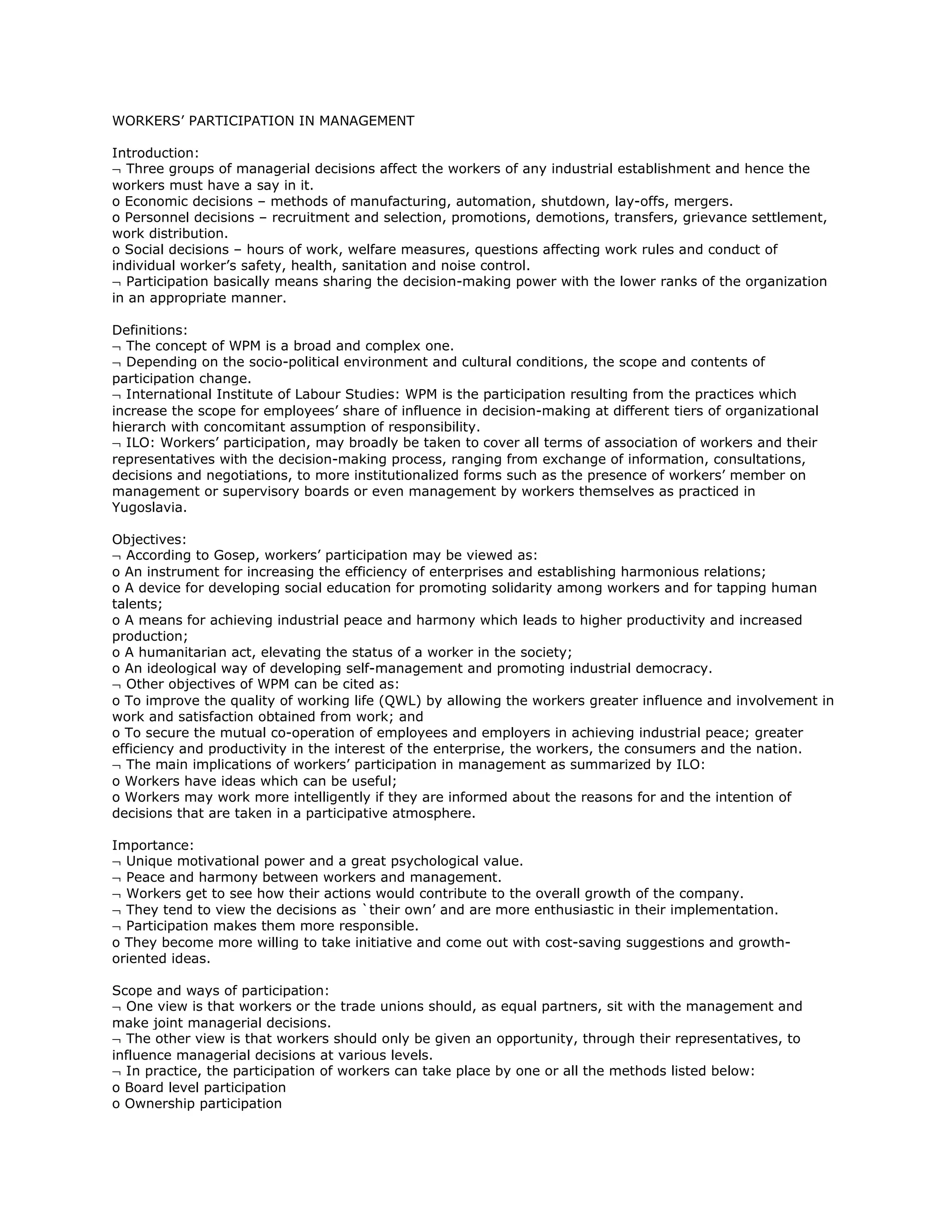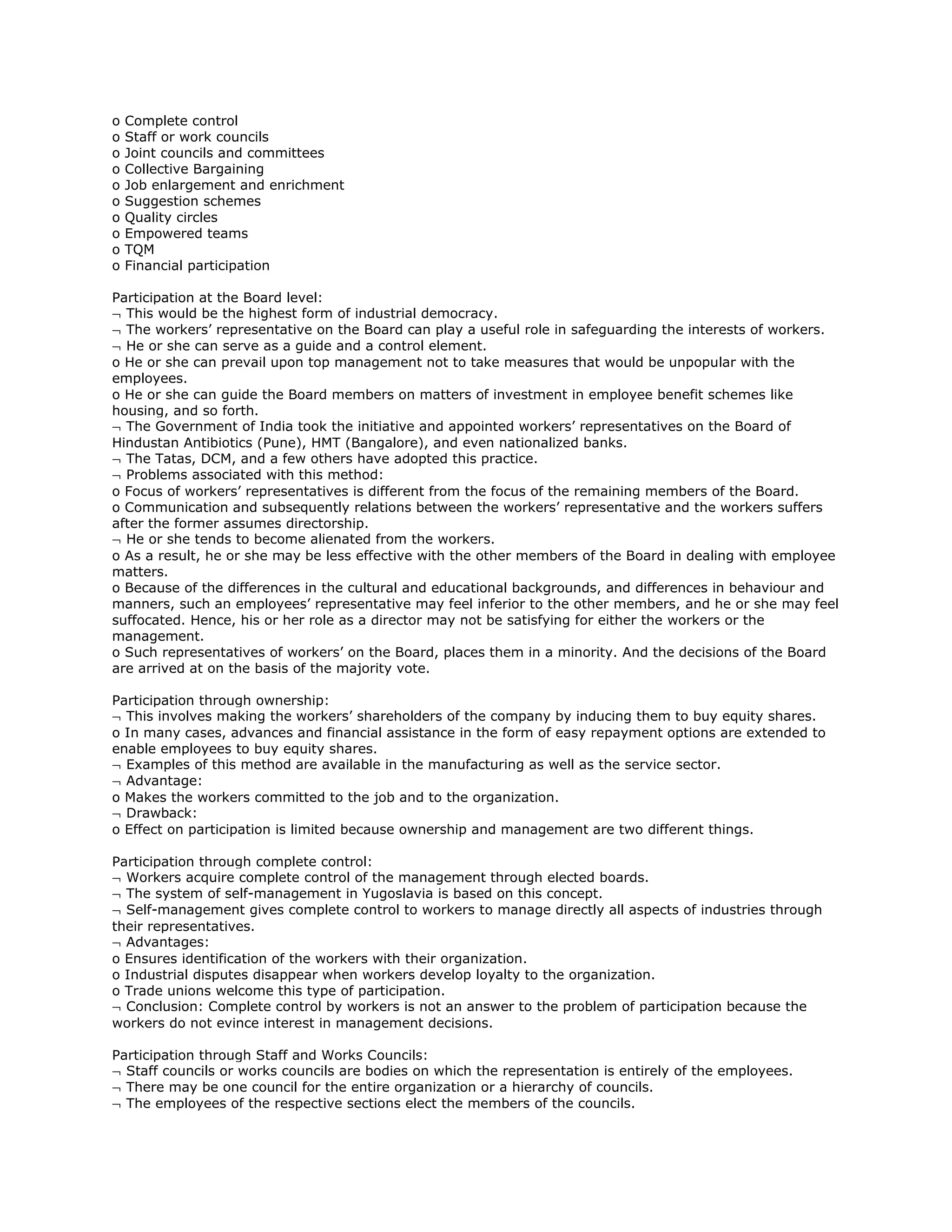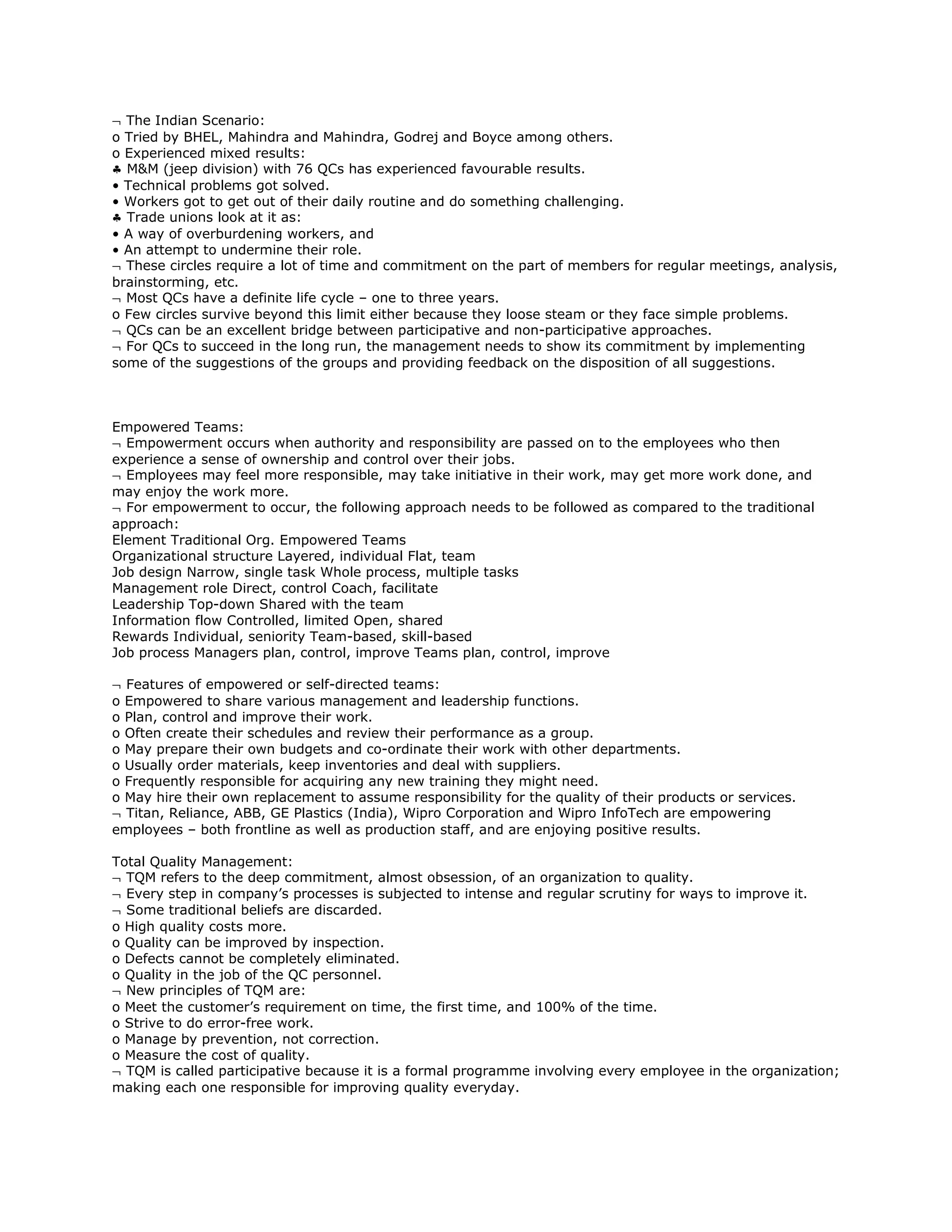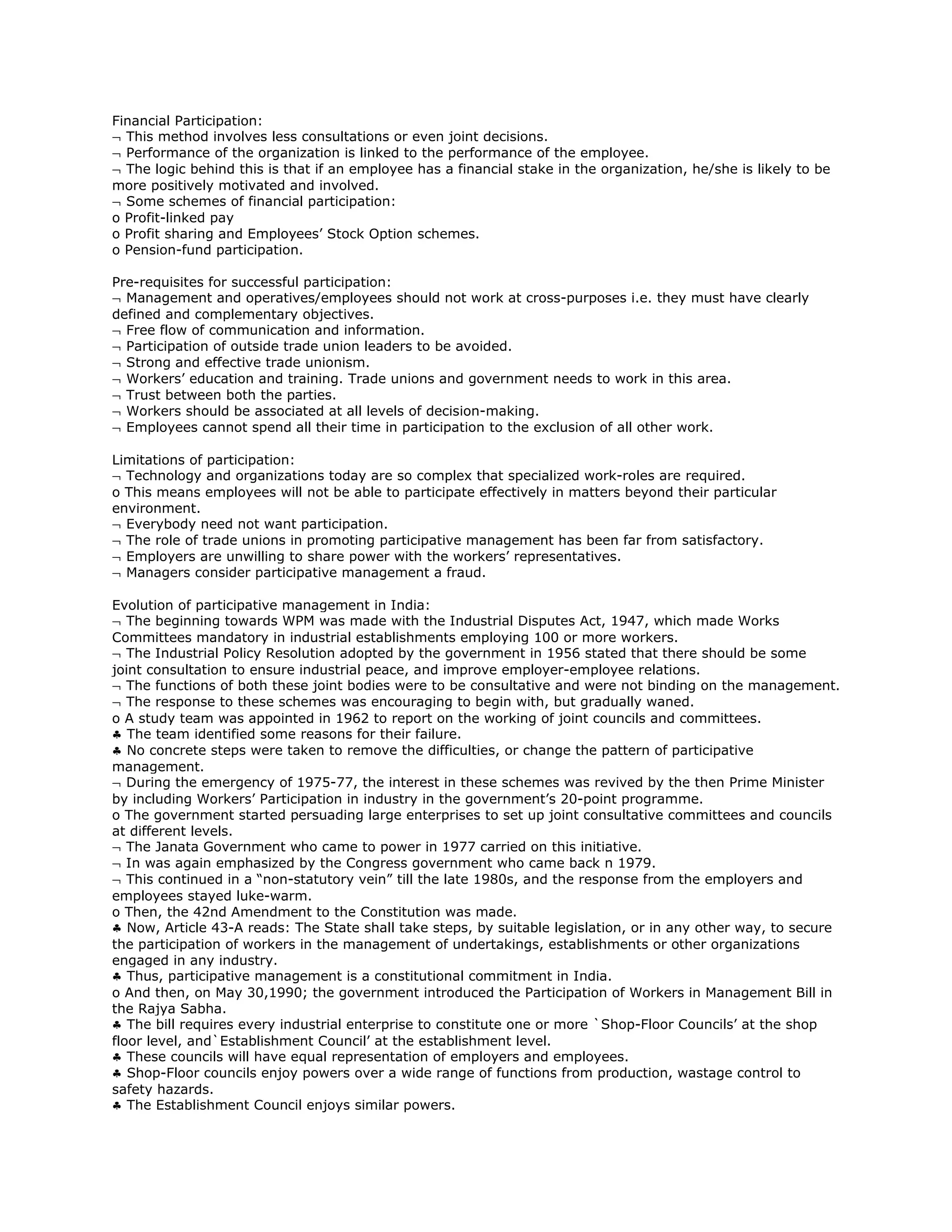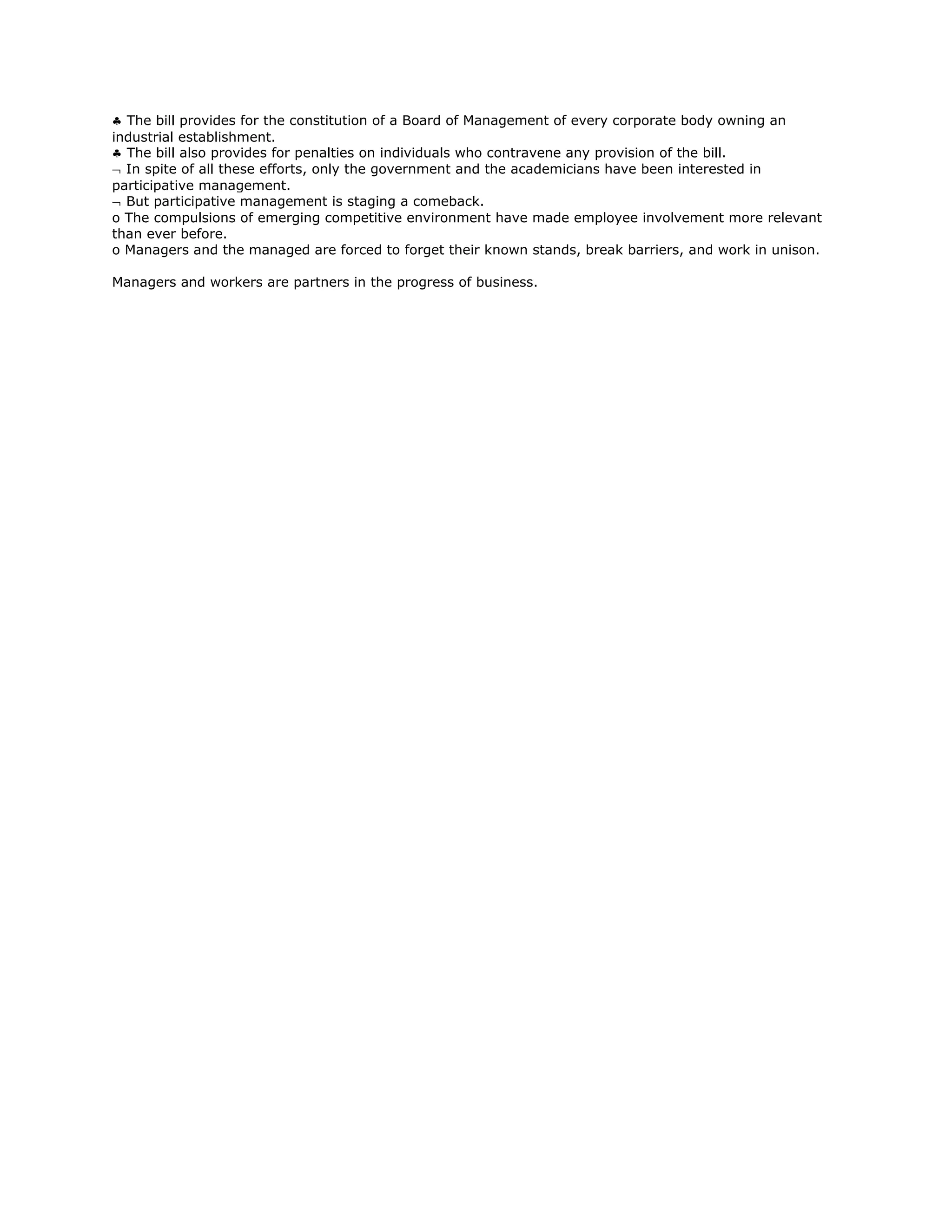The document discusses workers' participation in management in organizations. It defines workers' participation as workers having a say in economic, personnel, and social decisions that affect them through appropriate sharing of decision-making power. It outlines various ways workers can participate, such as through ownership, control, councils, committees, bargaining, job design, suggestion schemes, quality circles, empowered teams, and total quality management. The objectives, importance, limitations, and evolution of workers' participation in India are also discussed.
